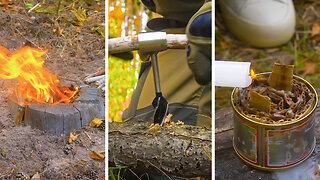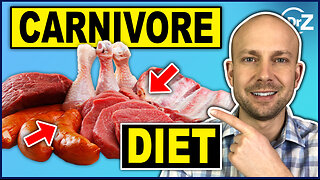Premium Only Content

Food safety - food hygiene inspections
**Food Safety: Food Hygiene Inspections**
Food hygiene inspections are conducted to ensure that food establishments comply with food safety regulations and maintain high standards of hygiene. These inspections are typically carried out by local health authorities or environmental health officers (EHOs). Here’s a comprehensive overview of the process and what it entails:
---
### 1. **Purpose of Food Hygiene Inspections**
- **Protect Public Health:** Ensure food served to customers is safe to consume.
- **Legal Compliance:** Verify that food businesses adhere to food safety laws and guidelines.
- **Prevent Foodborne Illness:** Minimize risks associated with contamination and poor practices.
- **Promote Best Practices:** Encourage businesses to adopt high standards in food hygiene.
---
### 2. **When Are Inspections Conducted?**
- **Routine Inspections:** Scheduled based on the risk profile of the business (e.g., high-risk establishments like restaurants are inspected more frequently).
- **Unannounced Visits:** Inspectors may arrive without prior notice to assess everyday operations.
- **Follow-Up Inspections:** Conducted to ensure that previously identified issues have been resolved.
- **Complaint Investigations:** Triggered by customer complaints or reports of suspected foodborne illnesses.
---
### 3. **What Do Inspectors Check?**
Inspectors evaluate multiple aspects of the food business, including:
#### a. **Food Handling Practices**
- Proper storage, preparation, cooking, cooling, and reheating procedures.
- Prevention of cross-contamination between raw and cooked foods.
#### b. **Hygiene of Premises and Equipment**
- Cleanliness of surfaces, utensils, and food preparation areas.
- Maintenance of kitchen equipment and facilities (e.g., freezers, refrigerators, ovens).
#### c. **Personal Hygiene of Staff**
- Use of protective clothing (e.g., gloves, aprons, hairnets).
- Adherence to handwashing protocols.
- Fitness to work (e.g., reporting illnesses).
#### d. **Temperature Control**
- Safe storage temperatures for chilled and frozen food.
- Correct cooking and holding temperatures for hot food.
#### e. **Pest Control Measures**
- Absence of pests (e.g., rodents, insects).
- Proper waste disposal and sealed storage areas.
#### f. **Food Safety Documentation**
- Records of temperature checks, cleaning schedules, and staff training.
- Implementation of a food safety management system, such as HACCP.
---
### 4. **Inspection Outcomes**
After an inspection, the inspector provides a report detailing their findings. Outcomes may include:
- **Pass:** The business complies with regulations.
- **Improvement Needed:** Minor issues that require corrective action.
- **Fail/Prohibition Notice:** Serious breaches that may lead to temporary closure until issues are resolved.
In many countries, food hygiene ratings are assigned (e.g., 1–5 stars) and may be displayed publicly.
---
### 5. **Common Non-Compliance Issues**
- Poor cleaning standards and accumulation of dirt or grease.
- Improper food storage and handling leading to contamination.
- Lack of staff training in food hygiene.
- Inadequate pest control measures.
---
### 6. **Preparation for Inspections**
- **Regular Training:** Ensure all staff are trained in food safety and hygiene.
- **Internal Audits:** Conduct regular self-checks to identify and address potential issues.
- **Keep Records Updated:** Maintain logs for cleaning, temperature checks, and pest control.
- **Stay Informed:** Keep up with changes in food safety laws and guidelines.
---
### 7. **Consequences of Non-Compliance**
- Legal penalties, including fines or closure of the business.
- Loss of reputation and customer trust.
- Potential civil lawsuits in cases of foodborne illness outbreaks.
---
**Conclusion**
Food hygiene inspections play a vital role in maintaining the safety and quality of food offered to consumers. By implementing robust food safety practices, businesses can not only pass inspections but also build trust and loyalty among their customers.
Would you like details on how to implement an effective food safety management system or improve specific inspection areas?
-
 6:54
6:54
HSESafetyInformation
4 days ago6 Must Try Breakfast recipes By Food Fusion
201 -
 46:31
46:31
PMG
11 hours agoHannah Faulkner and Mary Flynn | REVIVING THE AMERICAN DREAM - GROWING UP A FLYNN
365 -
 3:01
3:01
Kirill MultitoolOfficial
23 hours ago $3.35 earnedSurvival skills and Bushcraft HACKS in the forest!
19.8K5 -
 11:52
11:52
Dr. Nick Zyrowski
11 hours agoWhat Can I Eat On The Carnivore Diet? | Detailed Guide
19.7K3 -
 16:23
16:23
TSPLY
19 hours agoNew CNN / MSNBC Meltdown Moments Of Getting Mad At Donald Trump And Elon Musk
13.2K12 -
 30:54
30:54
Cooking with Gruel
18 hours agoCooking with Matt and Ginger Gaetz
12.3K4 -
 1:22:55
1:22:55
MTNTOUGH Fitness Lab
20 hours agoHomeland Security Pulls Us Off The Plane! Jaw-Dropping Moments from MTNTOUGH's 2024 Ibex Hunt
30.2K1 -
 1:05:30
1:05:30
Kyle Rittenhouse Presents: Tactically Inappropriate
15 hours ago $0.67 earnedHey Doge, Where's My Coin?
14.4K3 -
 4:44
4:44
America First Policy Institute
22 hours agoAmerica First Unfiltered: Trump’s Historic First Month – Real Wins for Real Americans! 🇺🇸 #news
16.1K2 -
 8:22
8:22
DropItLikeItsScott
1 day ago $0.42 earnedThis IS one of the Greatest AR's EVER! The Nemesis by Special Ops Tactical
10.8K2